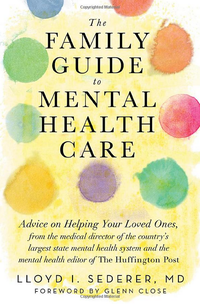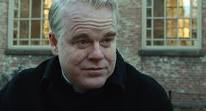Philip Seymour Hoffman and America's Most Neglected Disease
Lloyd I. Sederer, MD
Life is short, and tragically shorter if you lose your battle with addiction. As did Philip Seymour Hoffman -- an actor whose stunning portrayals of a wide range of troubled characters vividly lingers in the minds of countless movie goers. He reportedly was found with a syringe in his arm and packets of presumably what is heroin scattered about his West Village apartment.
Addiction is a disease. Addiction is not recreational drug use. It is characterized by compulsive drug and/or alcohol use despite clear harm to relationships, work and physical health. When addiction advances we see physical dependence on the substance where the body experiences withdrawal when blood levels drop. Like other diseases, addiction makes no distinctions between gender, race, ethnicity or socioeconomic status.
Addiction is the leading cause of preventable death in the USA. CASAColumbia, a renowned policy center on addiction, reports that of the approximately 2.5 million deaths (2009) in the U.S., nearly 600,000 deaths were attributable to tobacco, alcohol or other drugs. The costs of addiction to government (not to mention families, businesses and communities) exceed $468 billion annually.
Addiction in this country remarkably escapes our attention despite its huge prevalence. According to CASAColumbia:
Forty million Americans age 12 and over meet the clinical criteria for addiction involving nicotine, alcohol or other drugs. That is more than the number of people with heart conditions, diabetes or cancer. Meanwhile, another 80 million Americans fall into the category of risky substance users, defined as those who are not addicted, but use tobacco, alcohol and other drugs in ways that threaten public health and safety.
Yet, and this may be even more difficult to believe, only one in 10 people with any form of addiction report receiving any treatment -- at all. Past-year illicit drug use treatment (age 12 or older) was 15 percent, and past-year alcohol use treatment (also age 12 or older) was 8 percent.
Mr. Hoffman's loss to his family, his friends, his professional community and his admirers cannot be expressed with statistics. Instead, his loss tells us story of a life abruptly cut short by addiction during his peak of creativity. It is a reminder to us all how lethal a substance use disorder can be.
There are many paths for recovery from addiction. Help is available: 1-800-662-HELP (4357) or 1-800-273-TALK (8255).
No one size fits all. For some, 12-step programs are lifesaving. Some people may be suited for a program calling for abstinence, while others may benefit from what is called "harm reduction," a path that starts with reducing use (and danger) and can build from there. Recent years have seen the introduction of medications that aid people in remaining substance free (called medication-assisted treatment, or MAT). These are often best coupled with 12-step or counseling programs. We all, not just addicts, need to surround ourselves with people who support our well-being while assiduously avoiding people who want to exploit and otherwise take advantage of us. A variety of non-Western activities (like yoga and meditation), as well as nutrition and exercise aid in recovery.
Addiction is America's most neglected disease. Every day we lose people to its lethal outcomes. May Mr. Hoffman's epitaph include a reminder of how far we have yet to go to save others from so tragic a fate.
 Dr. Sederer's new book for families who have a member with a mental illness is The Family Guide to Mental Health Care (Foreword by Glenn Close).
Dr. Sederer's new book for families who have a member with a mental illness is The Family Guide to Mental Health Care (Foreword by Glenn Close).
www.askdrlloyd.com http://www.askdrlloyd.com
The opinions expressed here are solely mine as a psychiatrist and public health advocate. I receive no support from any pharmaceutical or device company.
Copyright Dr. Lloyd Sederer
